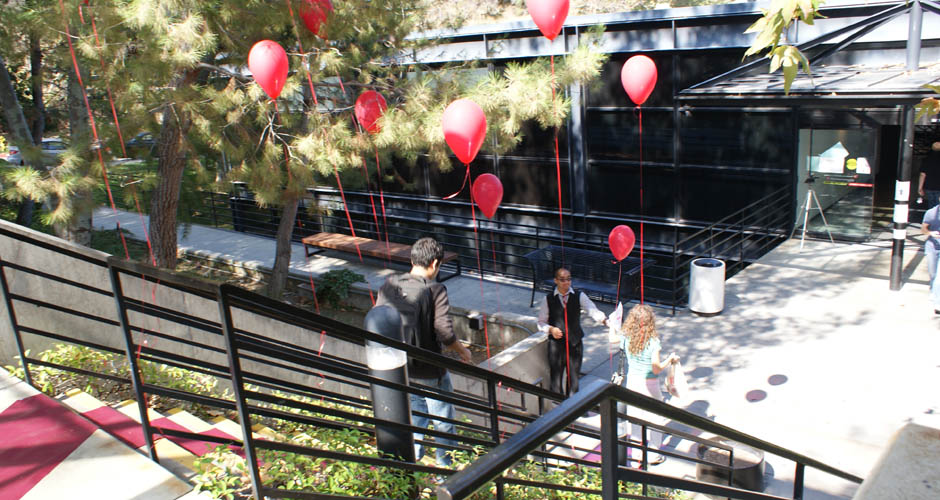Celebratory Path
September 2010, Faculty:Sean Donahue, Ben Hooker, Team Members: Michael Manalo, Adam Fischbach and Aarti Vashisht (me)
Project Synopsis: Celebratory Path is a culmination of series of experimentation that were conducted in Art Center permises and as part of the module we were asked to create an intervention through three forms,
-
a scenic path,
- a trap and
- dispensing machine.
Scenic Path
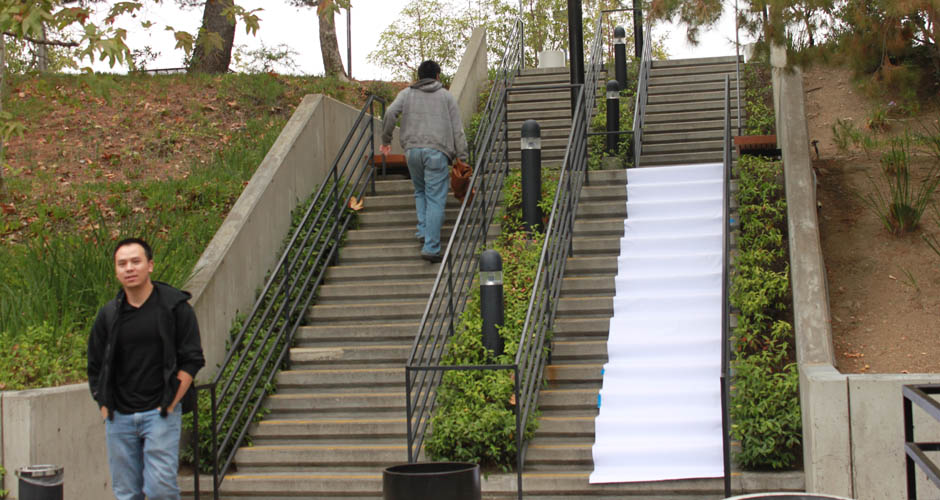
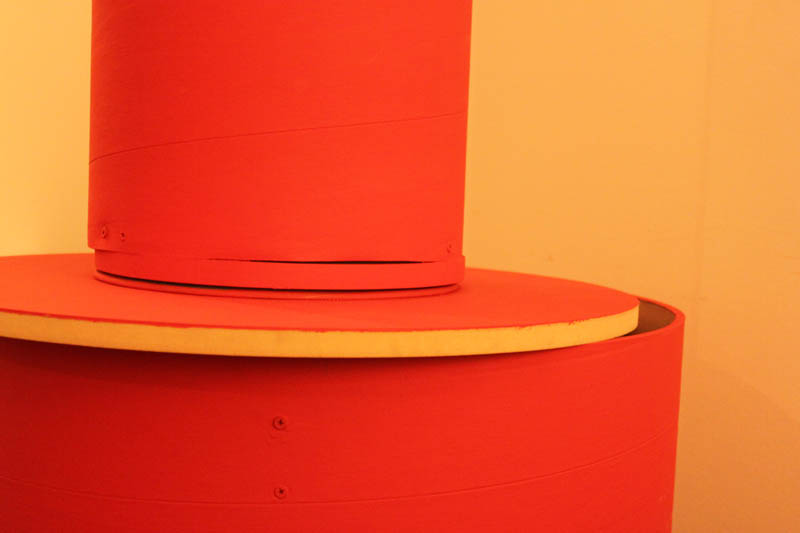
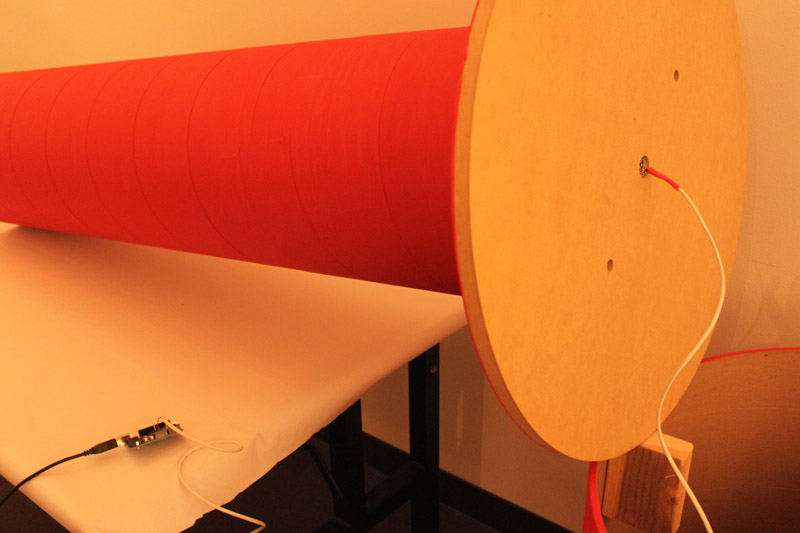
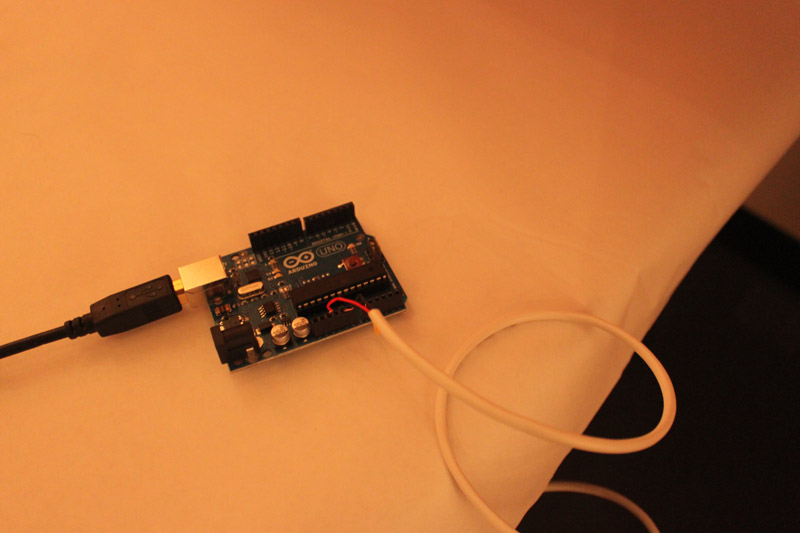
Our first intervention as a scenic path was located in the south entrance staircase. These staircase connects the student parking lot and the main building. As a group we decided to conduct a quick experiment by putting a white sheet of paper on one side of the staircase. The entire path was consciously not covered and some parts were left bare enough for people to have an uncomfortable descend if they chose not to walk on the white paper.
We went with an assumption that people would be attracted and curious about the unusual nature of the path (being covered with white paper) and may want to experience it. Thereby, we wanted to understand how people reacted to our scenic path.
Untitled from mike m on Vimeo.
Observations:
Most of the people were hesitant to walk on the white paper.
They either chose an alternate path and incase they had taken the white paper route then they switched to descend through the uncovered patch.
Few people were however were excited by the unusualness and enjoyed their way down on the white paper.
We learnt that white as a color could also be a reason why people chose not to follow the path.
Trap
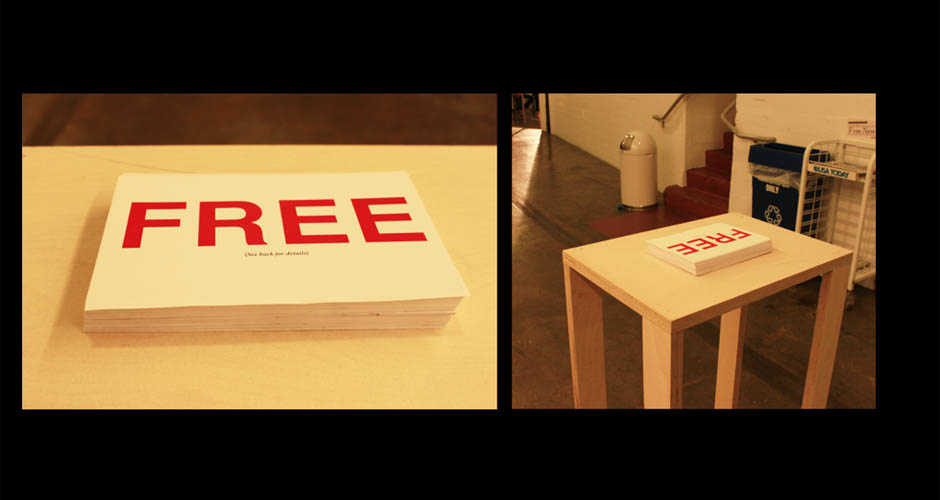



For our experiment with trap we chose to tease people with the notion of FREE. Our expectations was that people are attracted to free objects and they like to take/collect objects if they don't have to pay for it. We used a harmless artifact of PostCard and simply wrote FREE in bold to test our assumptions. But we did not leave at that, we stuck a pack of postcards together in a way that it appears as a loose pack of cards. Only upon interaction with the top card would people know that it is impossible to take just one card. By doing this we wanted to understand the threshold of people's forbearance upon realizing that it was a trick. This pack was placed on a pedestal in the center of a path that lead to the entrance of the cafeteria at South Campus facility of Art Center.
Untitled from mike m on Vimeo.
Observations
Some people walked past looking at the pedestal but did not attempt to pick it up.
However, most of who stopped were people who were in a group and chatting with their friends. Upon realization of the trick they reacted in a lighthearted manner.
Trap - Part 2
Untitled from mike m on Vimeo.
In the second version of this exploration we used the same card and same pedestal. However this time we placed the pedestal in a inconspicuous place, at the corner entrance of the busy a cafeteria in the North Campus facility. This time we animated the pedestal by triggering a sound as people passed by. If people interacted with the pack of cards and lifted the object then some arbitrary objects would be revealed lying in the box underneath.
Observation: With the addition of the sound we realized that more people consciously interacted with the object.
Dispensing Machine
While proceeding with ideas for a dispense machine experiment we found ouselves discussing the notion around a dispense machine and were challenged by following questions.
What is a dispense machine meant to do?
What role does it play in our day to day lives?
Can it only dispense desirable objects?
How would people react to a machine that dispensed ugliness?
Through these discussions we arrived at our first idea for the dispense machine, a rough box that dispensed card with pictures of ugly animals. We wanted to muse on the reactions and behaviors of people with ugly things.
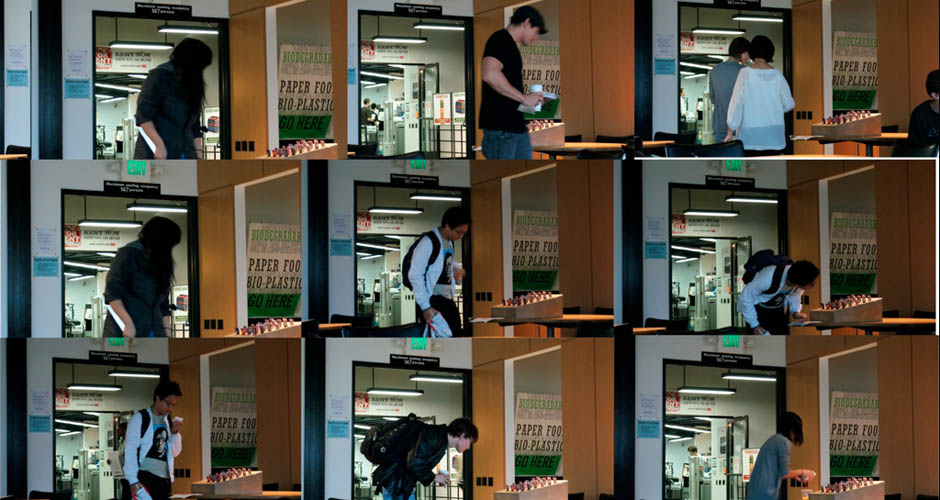



Observations
People were curious and often called their friends to see the box that dispensed photographs of ugly animals.
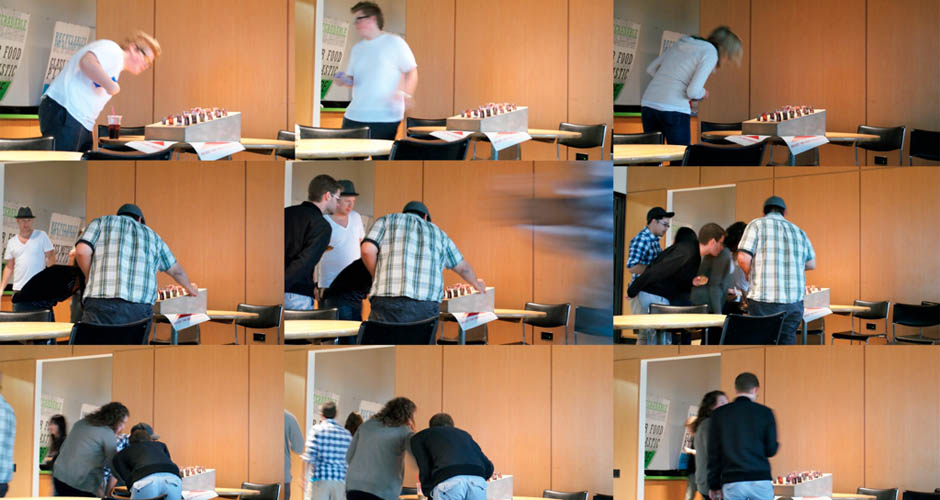



Dispensing Machine - Part 2
Taking the lessons from the first dispense machine, we repurposed an existing toilet paper dispenser to dispense pictures of ugly animals. In addition to this we created a triggering clock that revealed a number on top of the machine. This number changed as people pulled the paper out of the machine.
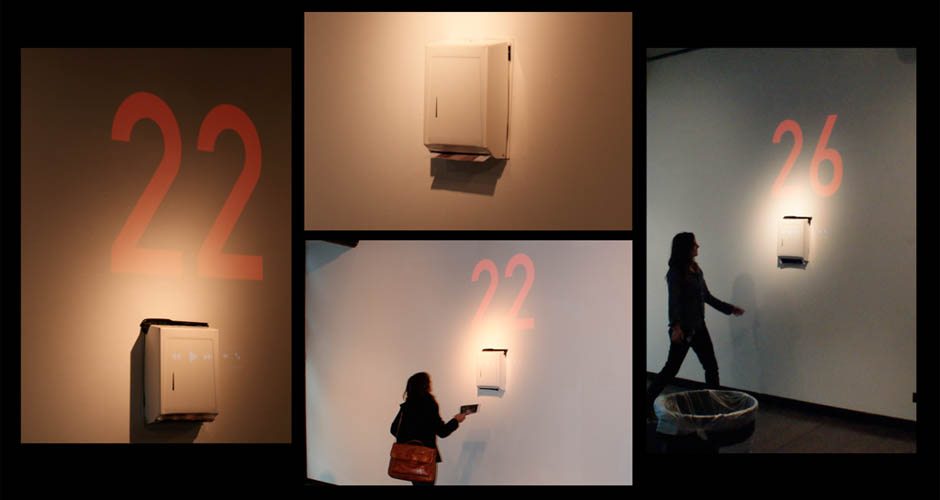



Through this experiment we realized that though technology triggered some interest it lacked clarity, cohesiveness and didn't embody the interaction.
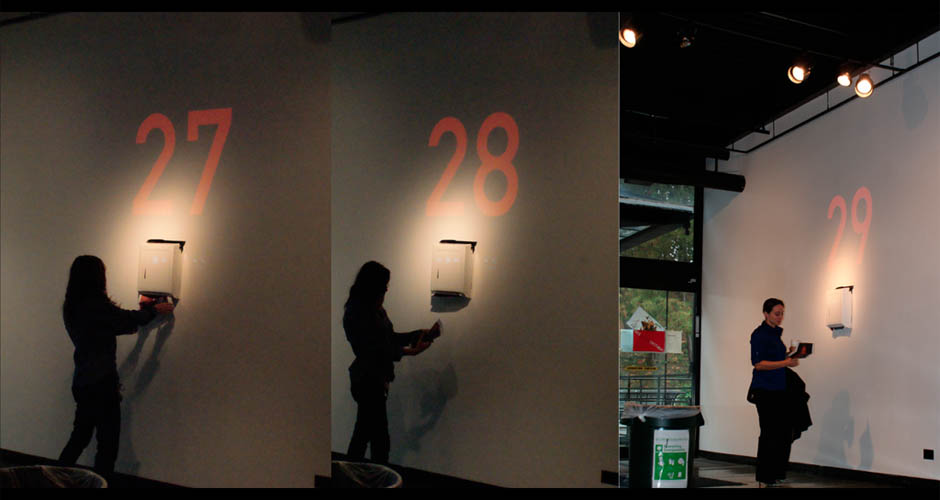



Final Learning Outcomes
Through this experiment we realized that though technology triggered some interest but it lacked clarity, cohesiveness and didn't embody the interaction. We observed the strength of simplicity of the content in trap, strengthen by the subtle curiosity created by the sound could attract attention. The slight elaboration through the sense of celebration in the scenic path provided playfulness to the path and made people adopt it with greater readiness. And, by using a familiar dispense machine we realized that people behaved as desired with familiar objects even when placed in unfamiliar locations, it required little learning curve.
Final Experiment
Our final experiment was amalgamation of the various learning attained from the observations. And we decided to create a final experiment that incorporated all three in some form. We created various Touch Points.
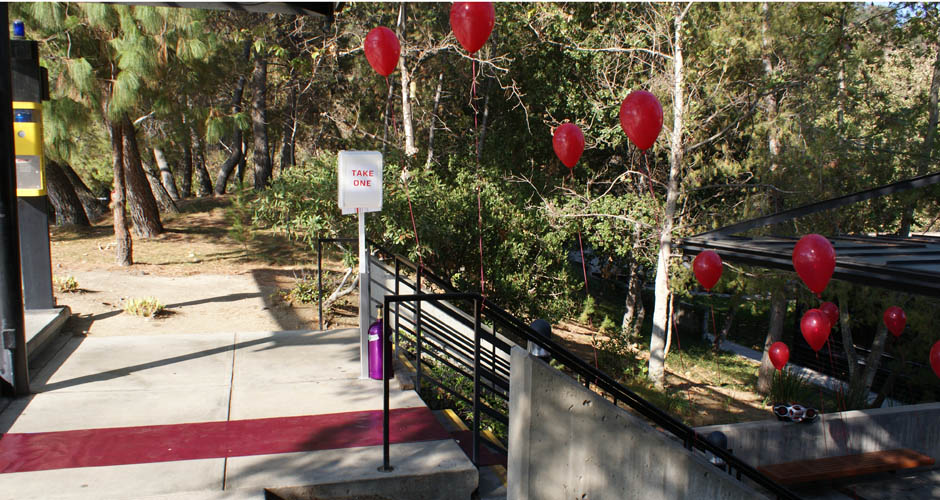



Making the path visible from distance through balloons and extending the path to the landing.
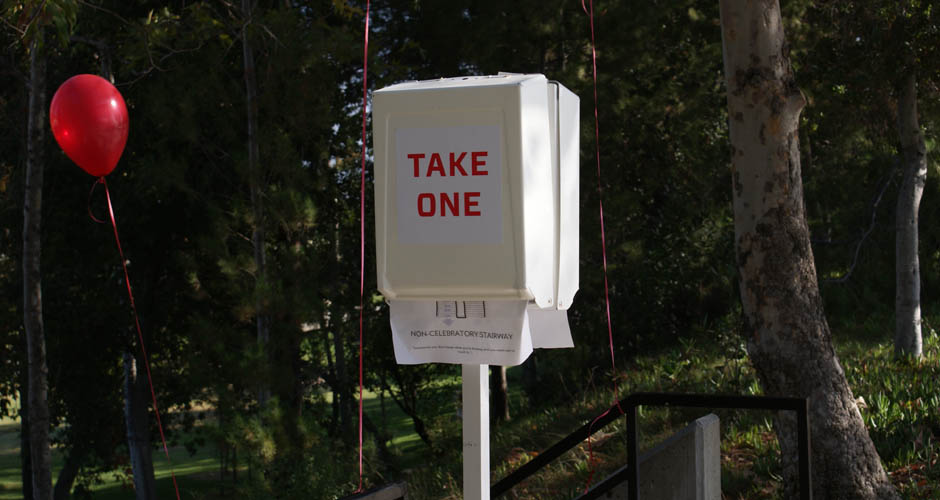



We placed the two dispense machines facing the path, these dispense machines where titled with 'Take One'. The dispense machine's acknoledgement was further leveraged by a monotonous beep. The dispense machine dispensed the map of the path they had chosen to undertaken. This intervention resulted in a strange unexpected outcome. Even though people take those stairs daily they still carefully read the map and made their choices. Some actually followed the path, even the non-celebratory path.
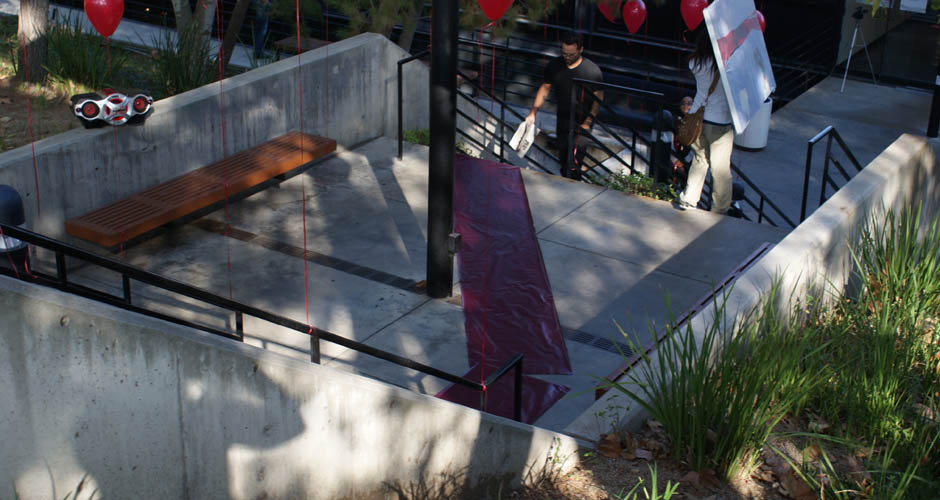



The crossing of the path, thus making the person change his route and experience the decent in a different way.
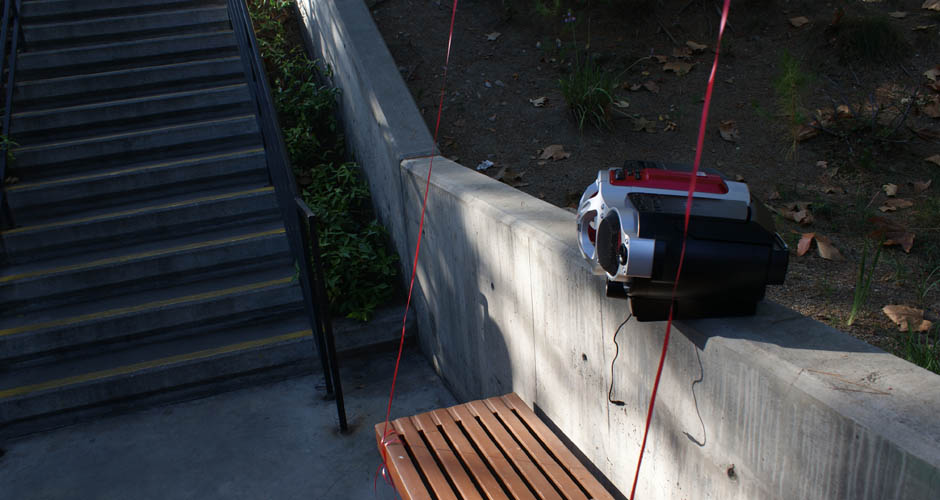



A sound box cheered for the people who completed the celebratory path thus adding another touch point and amplifying the celebratory path. And, finally ending the experience with personalized greeting.
